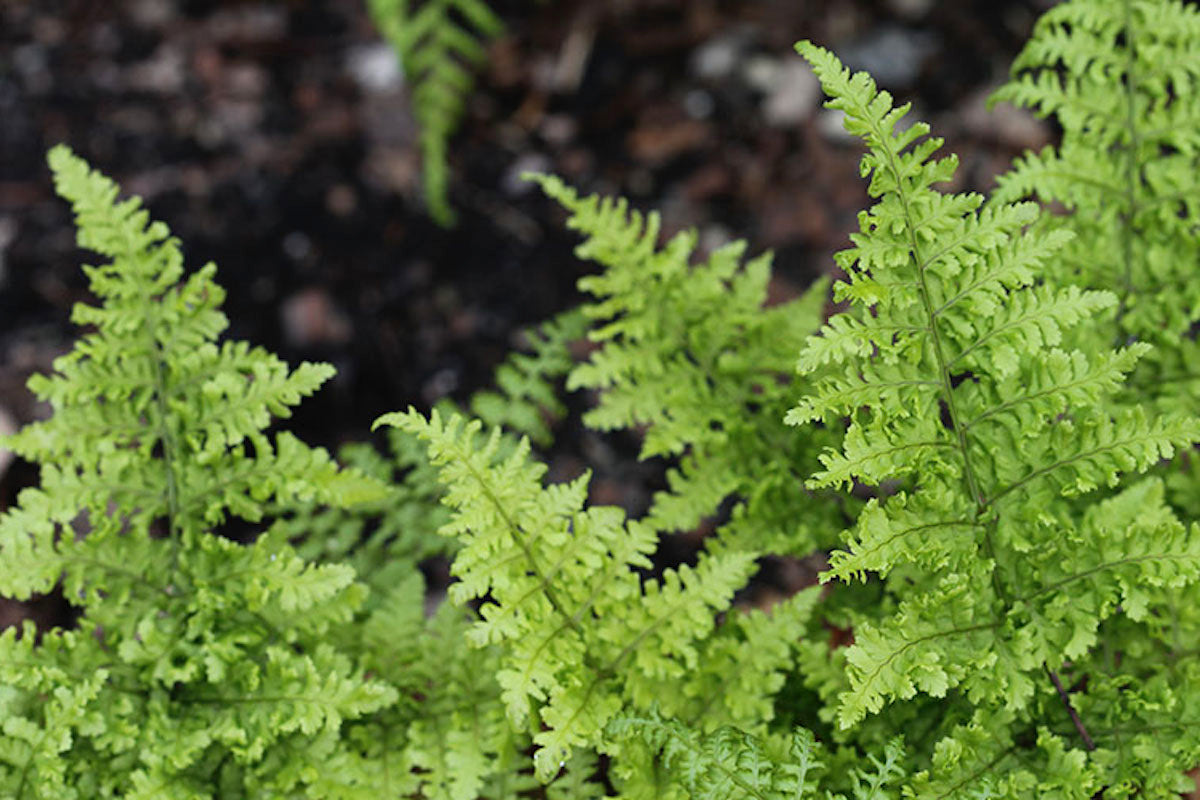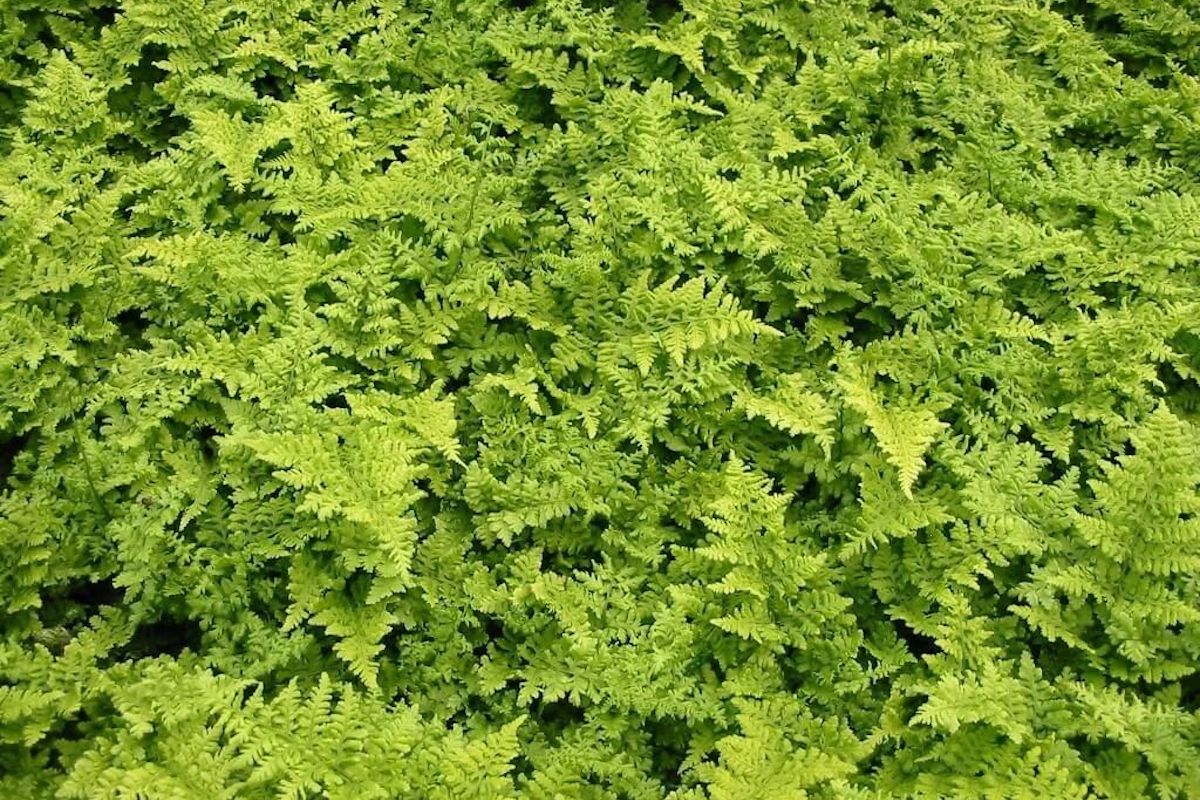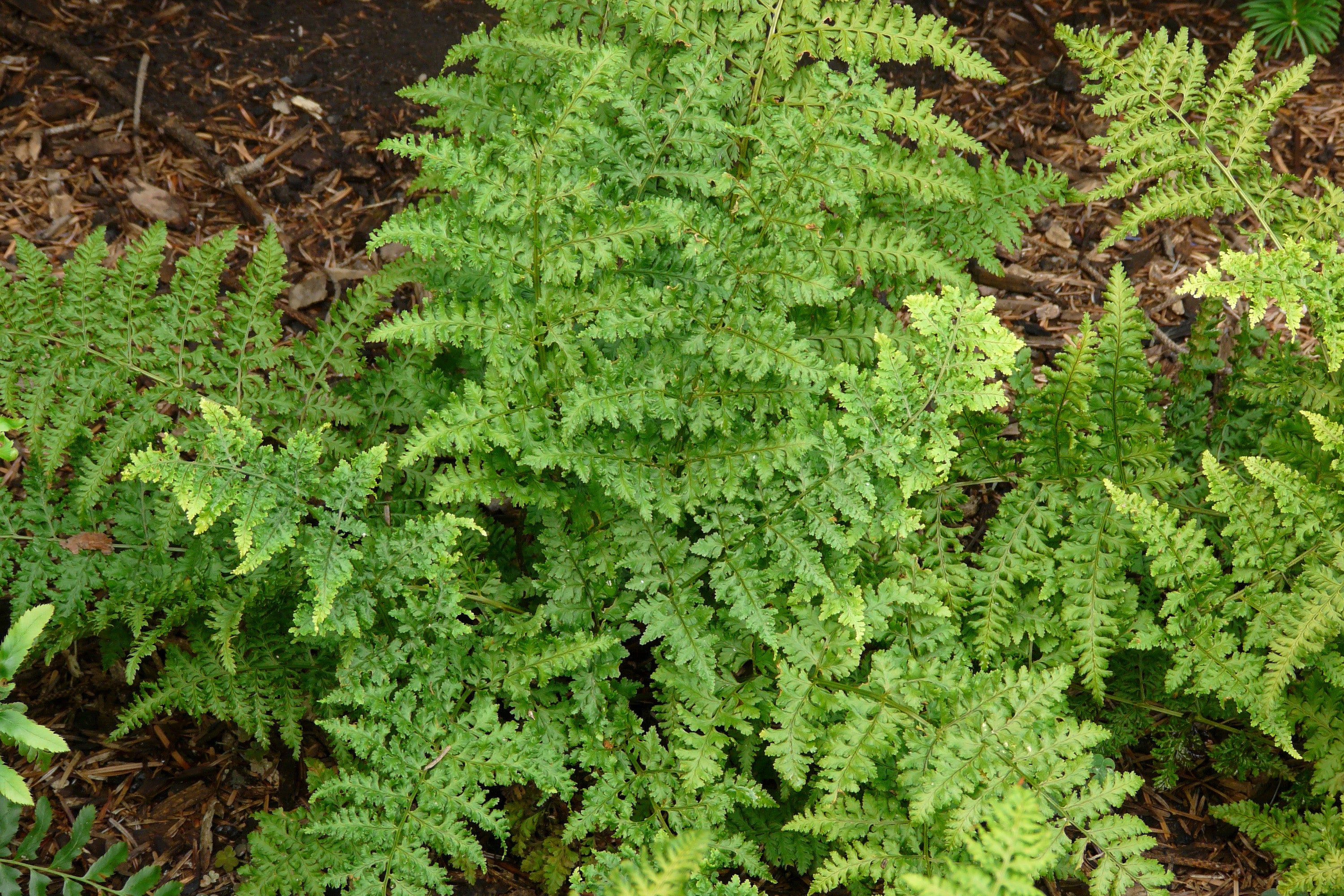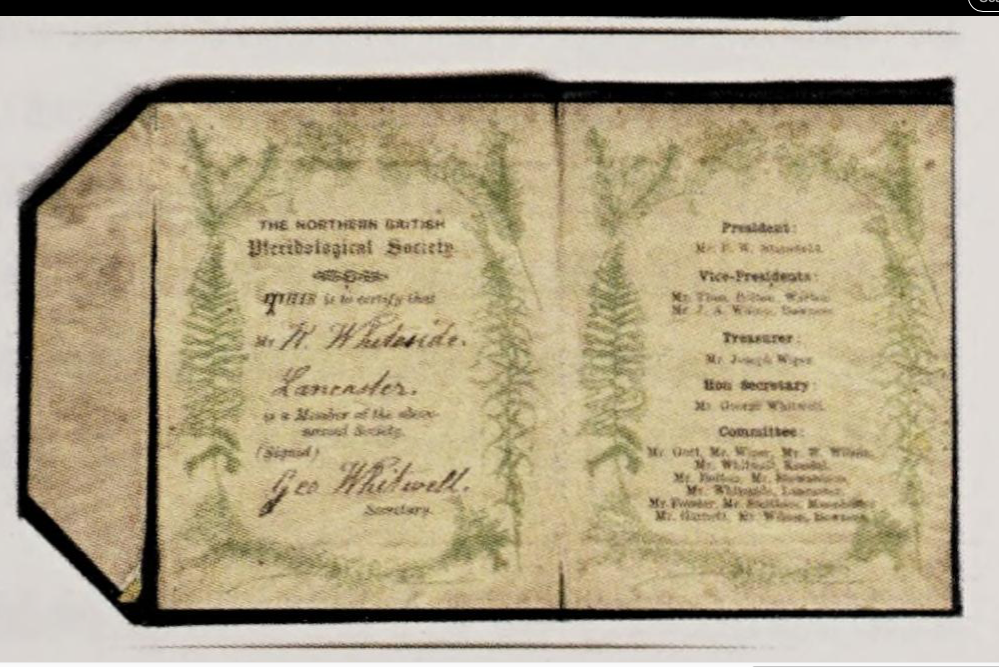Dryopteris dilatata 'Crispa Whiteside'
Approx. 0.5 litre pot
About this cultivar:
Dryopteris dilatata 'Crispa Whiteside' is a partially evergreen fern, with frond segments toothed and attractively crisped. Has an intricate and elegant effect. Best viewed from above! Has the RHS AGM
More compact than the species, this cultivar has the RHS AGM. Originally found by someone called Robert Whiteside (not Robert Crispa). In 1891 a group of enthusiasts in the English Lake District came together in Kendal and formed the Northern British Pteridological Society. Robert Whiteside’s membership card is pictured!
The species, Dryopteris dilatata, often called the broad buckler-fern, is native to Europe, particularly western and central Europe. The Latin specific epithet dilatata means "spread out".
- Position: Full shade, partial shade
- Soil: Almost any soil, grows well in Ballyrobert
- Flowers: -
- Other features: Grows well in Ballyrobert, Woodland Plant, Dappled Shade or Full Shade Loving, Interesting Foliage or Fruit, Royal Horticultural Society Award of Garden Merit (RHS AGM)
- Hardiness: H6 - Hardy in all of UK and northern Europe (-20 to -15°C), Fully hardy - grows well in Ballyrobert!
- Habit: Tufted, Clump forming
- Foliage: Semi evergreen
- Height: 30 - 60 cm (1 - 2 ft)
- Spread: 30 - 45 cm (1 - 1.5 ft)
- Time to full growth: 5 to 10 years
- Plant type: Herbaceous Perennial, fern
- Colour: Green
- Goes well with: Shade
About this genus:
Dryopteris is a fern genus of 225 species from around the world that give us the majority of our great garden ferns. The genus name comes from the Greek words drys (tree) and pteris (fern) in possible reference to this fern's typical habitat in woodland areas. It is a good idea to put Dryopteris (male ferns) near Athyriums (lady ferns) for reasons that (I hope) are obvious.
Dryopteris species come in a variety of shapes and sizes. Most gardeners assume that all ferns are green but Dryopteris species have variation in that regard - which ironically makes many people think they a dying or drying out! - once a week I have a customer telling me they need watered! The new growth on some species may be copper or cinnamon or even black.
Like most garden ferns, Dryopteris plants prefer light shade, almost full shade. Soil wise - anything that isn't too extreme. How to use them? Well... try shady areas!








